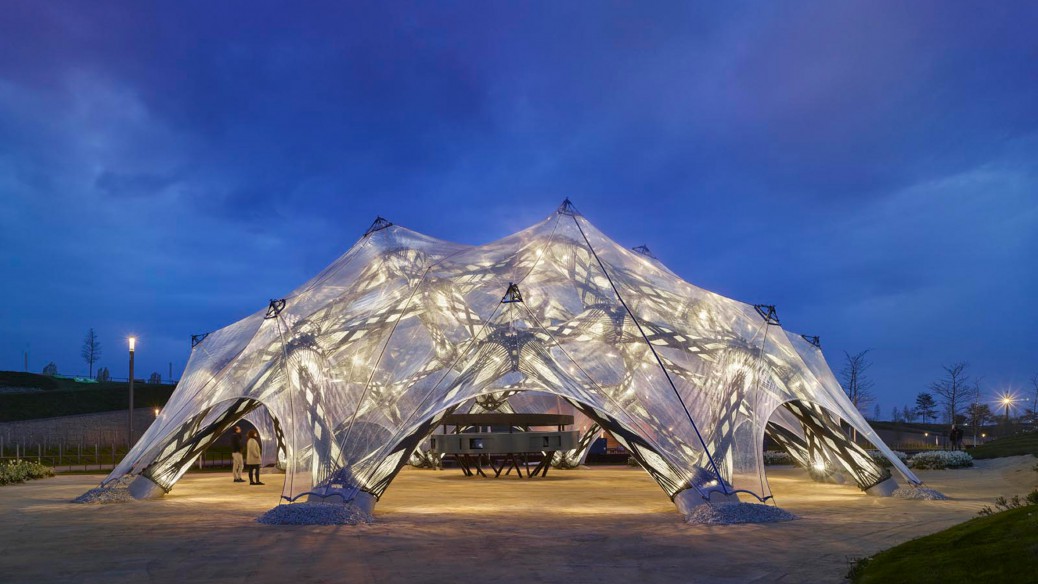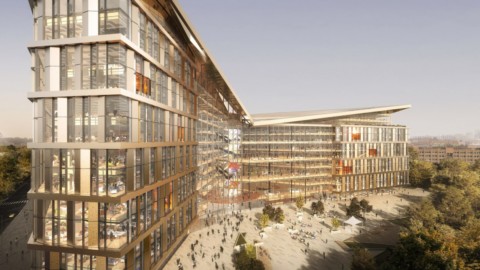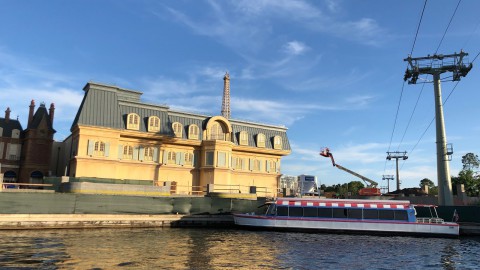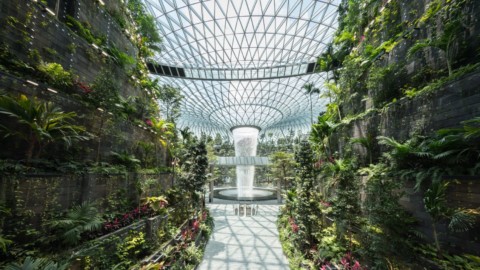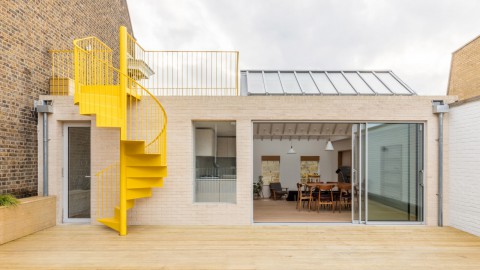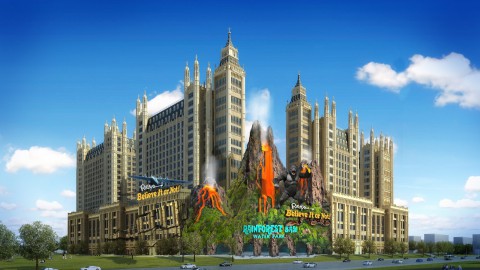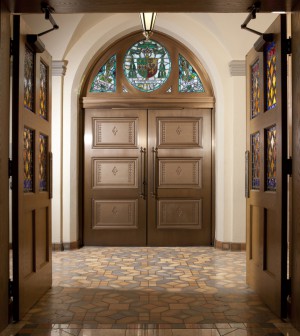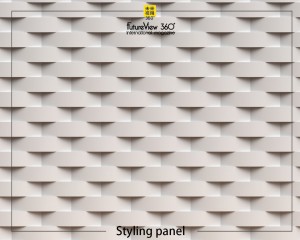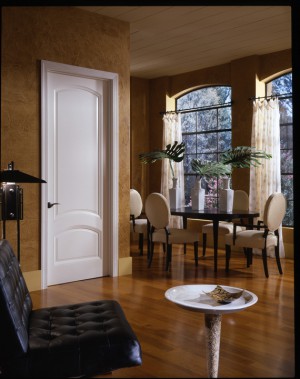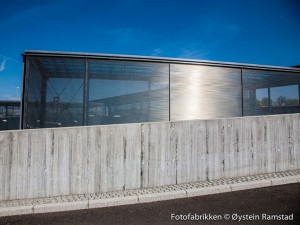The University of Stuttgart has continued its experiments into biomimicry and robotic construction with two pavilions at the Bundesgartenschau horticultural show in Germany.
Both of the pavilions are built by robots and are designed to imitate nature – known as biomimicry. A sweeping wooden pavilion has a shape based on sea urchins, while a fibre-composite pavilion takes its structure from beetle wings.
斯圖加特大學在德國Bundesgartenschau園藝展上繼續進行了兩個展館的仿生和機器人建設實驗。
兩個展館都是由機器人建造的,旨在模仿自然 – 被稱為仿生學。 一個寬敞的木製涼亭的形狀基於海膽,而纖維複合館的結構則採用甲蟲翅膀。
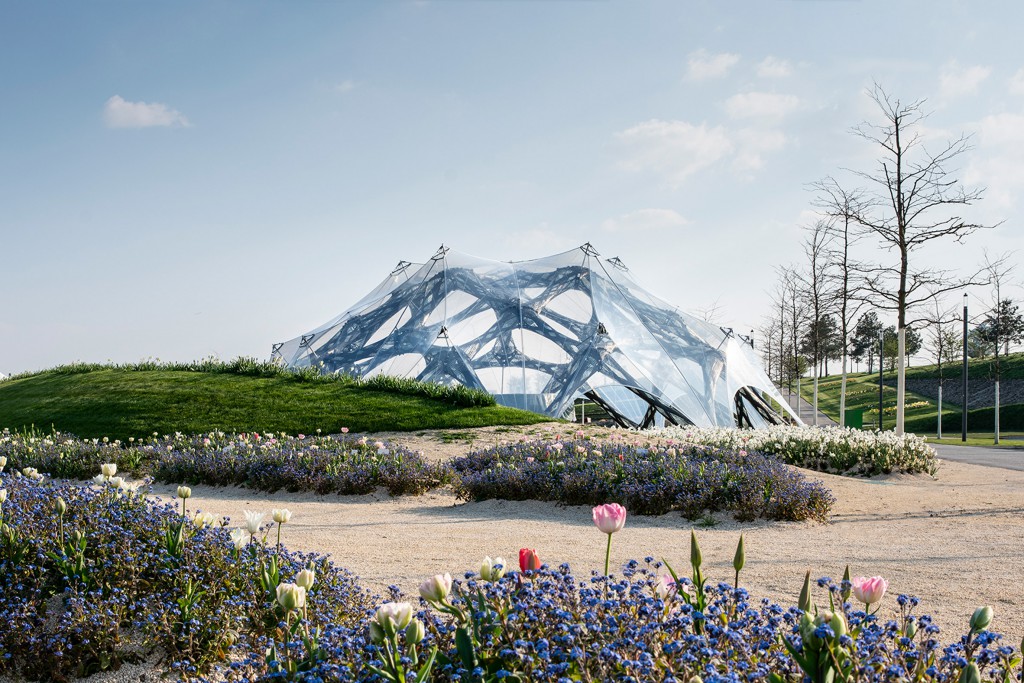
University of Stuttgart created two biomimetic pavilions, one from fibre-composite, at the Bundesgartenschau horticultural show|斯圖加特大學在Bundesgartenschau園藝展上創建了兩個仿生館,一個來自纖維複合材料
Researchers from the university built the BUGA Wood Pavilion from 376 unique plate segments that fit together like a jigsaw, with sub-millimetre precision.
The structure is based on the shell of sea urchins — something Stuttgart’s Institute for Computational Design and Construction (ICD) and the Institute for Building Structures and Structural Design (ITKE) have been studying for almost a decade.
該大學的研究人員從376個獨特的板塊中建造了BUGA Wood Pavilion,這些板塊像拼圖一樣,精確到亞毫米級。
該結構基於海膽的外殼 – 斯圖加特計算設計與建築研究所(ICD)和建築結構與結構設計研究所(ITKE)已經研究了近十年。
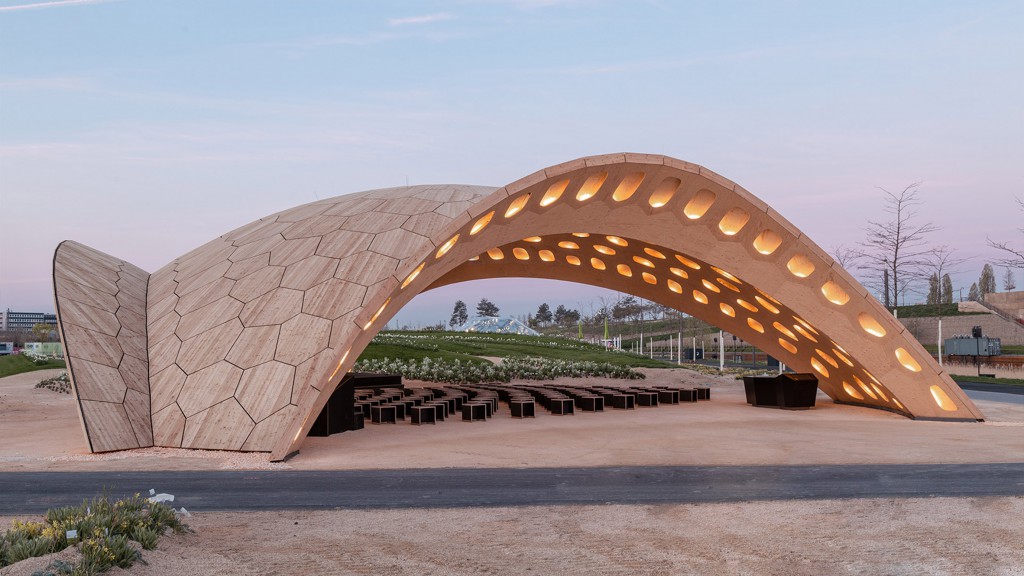
The BUGA Wood Pavilion takes its form from the structure of sea urchins|UGA Wood Pavilion採用海膽結構形式
Urchins have a distinctive skeleton made up of tightly interlocking plates, and the research groups have drawn on this repeatedly to build the likes of a small pavilion in 2011 and a stitched-together version in 2016.
For this iteration, the team wanted to outdo a direct precursor to this project — the Landesgartenschau Exhibition Hall from 2014, in which they’d interpreted the urchin morphology through finger joints.
海膽有一個由緊密互鎖的板塊組成的獨特骨架,研究小組已經反複利用這一點來建造2011年的小型展館和2016年的拼接版。
對於這次迭代,該團隊希望超越該項目的直接前身 – 2014年的Landesgartenschau展覽廳,他們通過手指關節解釋了海膽的形態。
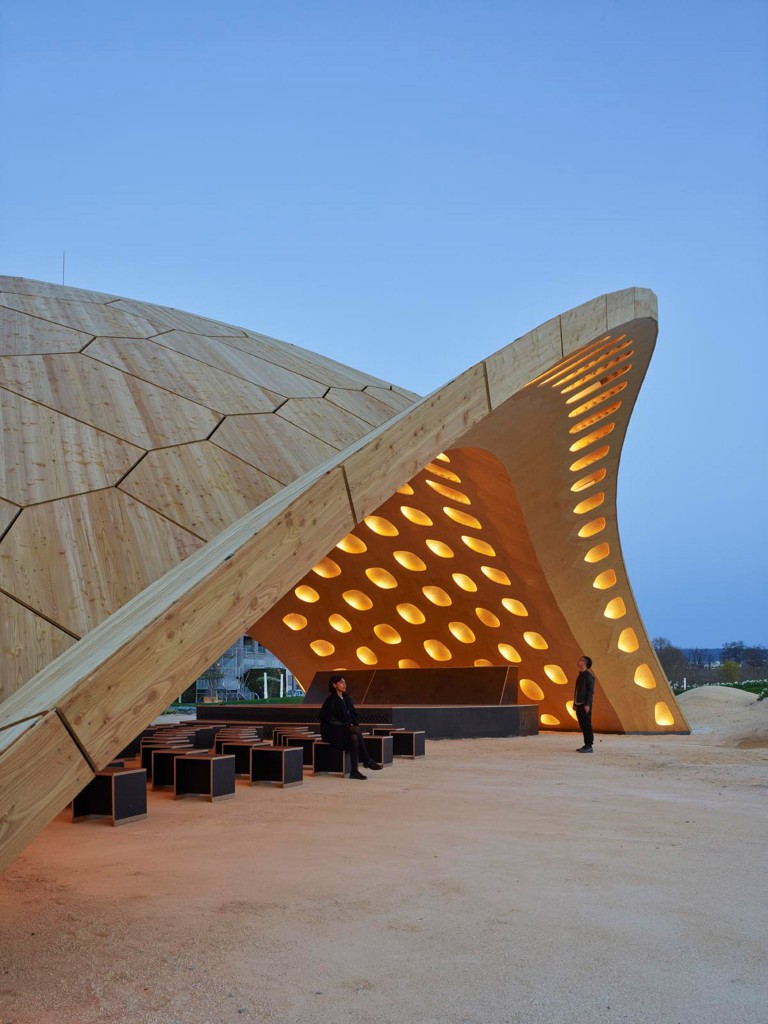
The reusable pavilion spans 30 metres|可重複使用的展館跨越30米
Their goal was to use the same small amount of wood per square metre,† but to triple the span of the pavilion. They also wanted to make it reusable.
The latest pavilion, on display at Bundesgartenschau in Heilbronn, Germany, spans 30 metres column-free. It weighs just 38 kilograms per metre squared — the result of using hollow wooden cases designed by computers.
他們的目標是每平方米使用相同數量的木材,†但是展館的跨度是三倍。 他們還想讓它重複使用。
最新的展館在德國海爾布隆的Bundesgartenschau展出,橫跨30米無柱。 它的重量僅為每平方米38公斤 – 這是使用計算機設計的空心木箱的結果。
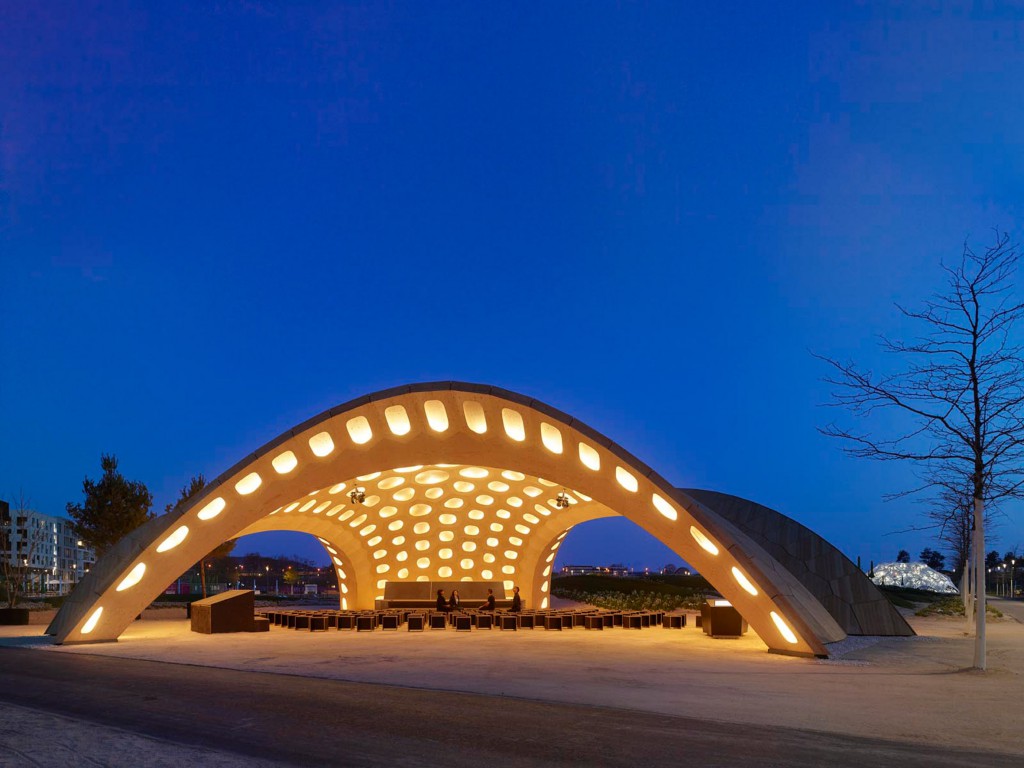
The Buga Wood Pavilion was constructed by two robots|Buga Wood Pavilion由兩個機器人構建
ITKE head Jan Knippers said the urchin-inspired design “results in a load-adapted and therefore highly efficient structure”.
“A biomimetic approach in architecture enables scientific, interdisciplinary lateral thinking,” added ICD’s Achim Menges. “At the overlap with digital technologies, surprising new construction methods can emerge, such as the robot-made, segmented wooden shell of the pavilion.”
ITKE負責人Jan Knippers表示,這款以海膽為靈感的設計“可以實現適合負載的高效結構”。
“建築中的仿生方法可以實現科學的,跨學科的橫向思維,”ICD的Achim Menges補充道。 “在與數字技術的重疊中,可能出現令人驚訝的新建築方法,例如展館的機器人製造的分段木殼。”
The team designed a bespoke robotic fabrication platform for the Buga Wood Pavilion, with two industrial robots gluing plates together and machining their 17,000 finger joints to 0.3-millimetre accuracy. Assembly on site took human labour in the form of two craftspeople working for ten days.
該團隊為Buga Wood Pavilion設計了一個定制的機器人製造平台,兩個工業機器人將板粘合在一起,並將其17,000個手指接頭加工成0.3毫米的精度。 現場組裝以兩名工匠的形式進行人工,工作十天。
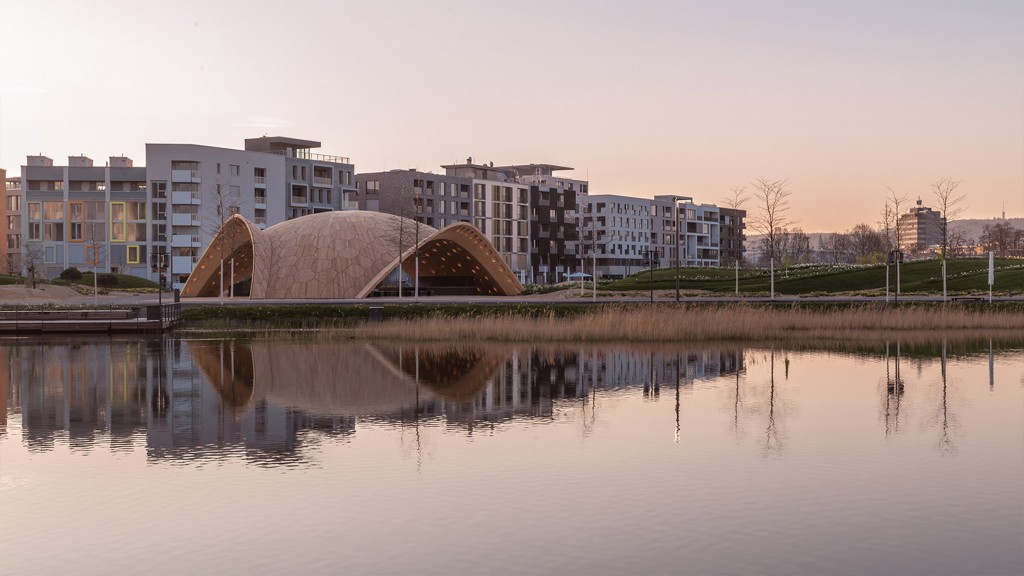
It is on display at the on display at Bundesgartenschau in Heilbronn, Germany|它在德國海爾布隆的Bundesgartenschau展出
“Instead of simple but solid wooden components, the fully automated manufacturing process developed by us allows the realisation of complex yet highly material-efficient and lightweight wooden cassettes,” said Menges. “They also lend the pavilion its characteristic architectural appearance.”
The BUGA Wood Pavilion is on display alongside a second pavilion – the BUGA Fibre Pavilion. This structure continues the ITKE and ICD’s work on woven fibre structures, such as their 2016 Elytra Filament Pavilion at London’s V&A.
“我們開發的全自動化製造工藝不再是簡單但堅固的木製部件,而是實現了複雜但高度材料和輕質的木製暗盒,”Menges說。 “他們還為展館提供了獨特的建築外觀。”
BUGA Wood Pavilion與第二個展館 – BUGA Fiber Pavilion展出。 這種結構延續了ITKE和ICD在編織纖維結構方面的工作,例如2016年倫敦V&A的Elytra Filament Pavilion。
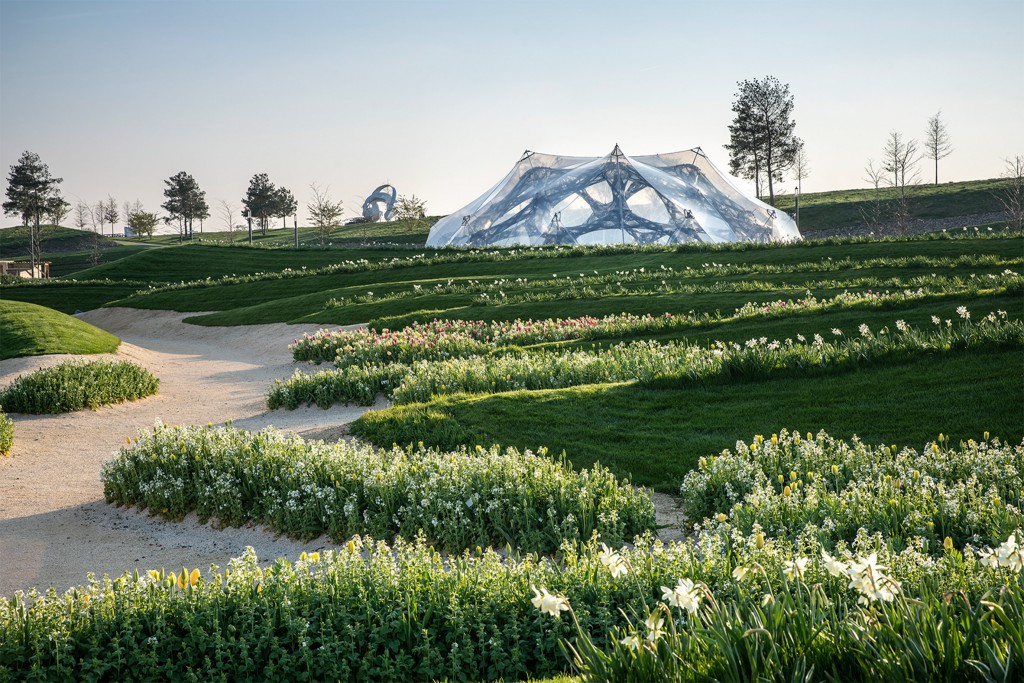
ITKE and ICD’ second pavilion takes its structure from beetle wings|ITKE和ICD的第二個展館採用甲蟲翅膀結構
Instead of the bodies of sea urchins, these structures take their inspiration from another naturally strong animal body part — beetle wings.
There is also a second layer of biomimicry in the very use of fibre composite as a building material — as the research team points out, most load-bearing structures in biology are composites of fibres such as cellulose, chitin or collagen.
For the Bundesgartenschau pavilion, the team used glass- and carbon-fibre-reinforced plastics, which they say share key characteristics with natural composites.
這些結構取代了海膽的身體,從另一個自然強壯的動物身體部分 – 甲蟲翅膀中獲取靈感。
在纖維複合材料作為建築材料的應用中還有第二層仿生學 – 正如研究小組所指出的那樣,生物學中的大多數承重結構都是纖維素,甲殼素或膠原蛋白等複合材料。
對於Bundesgartenschau展館,該團隊使用玻璃纖維和碳纖維增強塑料,他們說這些塑料與天然複合材料具有共同的特徵。
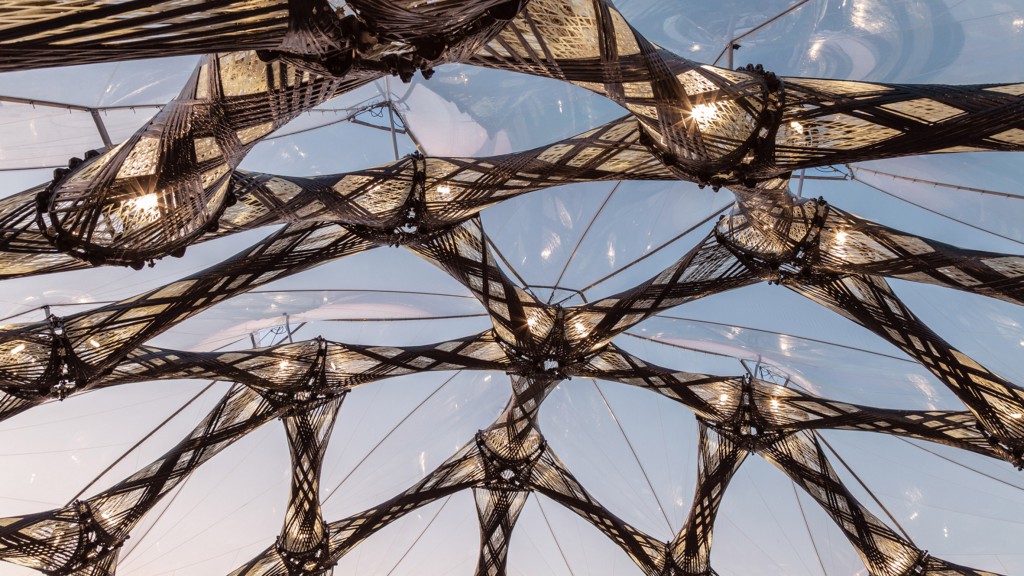
The BUGA Fibre Pavilion is made from glass- and carbon-fibre-reinforced plastics|BUGA Fiber Pavilion由玻璃纖維和碳纖維增強塑料製成
Again, the pavilion segments are built by two robots — in this case, University of Stuttgart-developed filament winding robots, each placing fibrous filaments in between two rotating scaffolds.
In this approach, which can be considered a form of additive manufacturing like 3D printing, there is no need for a mould or core, and therefore no production waste or material offcuts.
同樣,展館部分由兩個機器人構成 – 在這種情況下,斯圖加特大學開發的纖維纏繞機器人,每個機器人將纖維絲放置在兩個旋轉腳手架之間。
在這種可以被認為是3D打印的增材製造形式的方法中,不需要模具或芯,因此不需要生產廢料或材料邊角料。
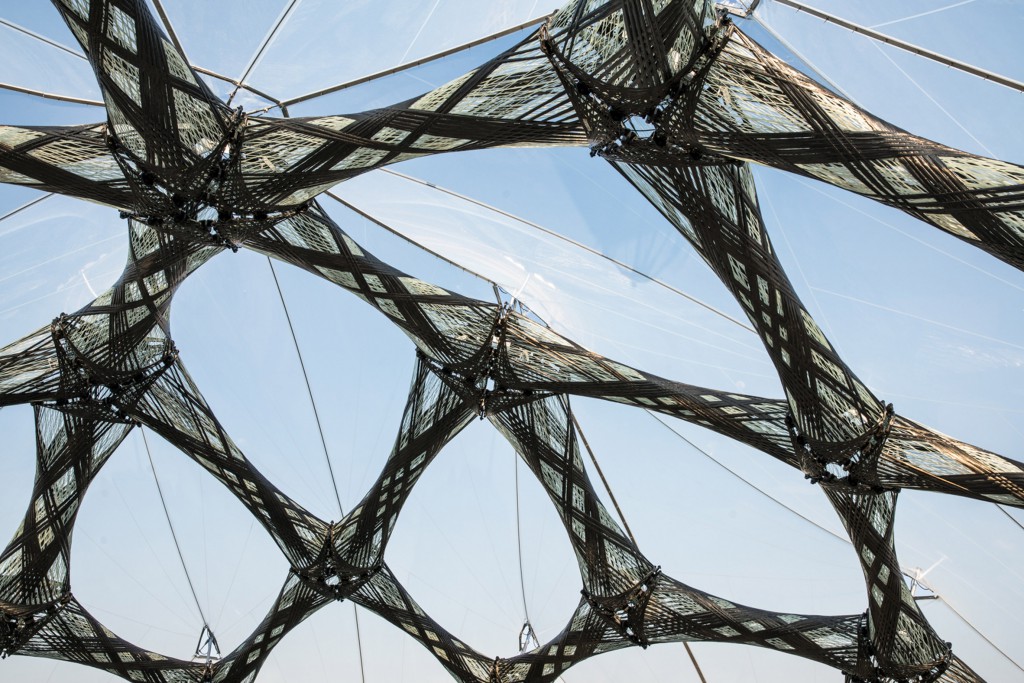
The structure was formed using additive manufacturing|該結構使用增材製造形成
The translucent fibres are glass composites, while the black ones contain carbon-fibre for structural advantage, and the whole pavilion is enclosed by an additional plastic membrane.
Per square metre, the structure weighs just 7.6 kilograms while still passing strength tests for building construction. Its free span is 23 metres.
半透明纖維是玻璃複合材料,而黑色纖維含有碳纖維以獲得結構優勢,整個展館由一個額外的塑料膜包圍。
每平方米,結構僅重7.6公斤,同時仍然通過建築施工的強度測試。 它的自由跨度是23米。
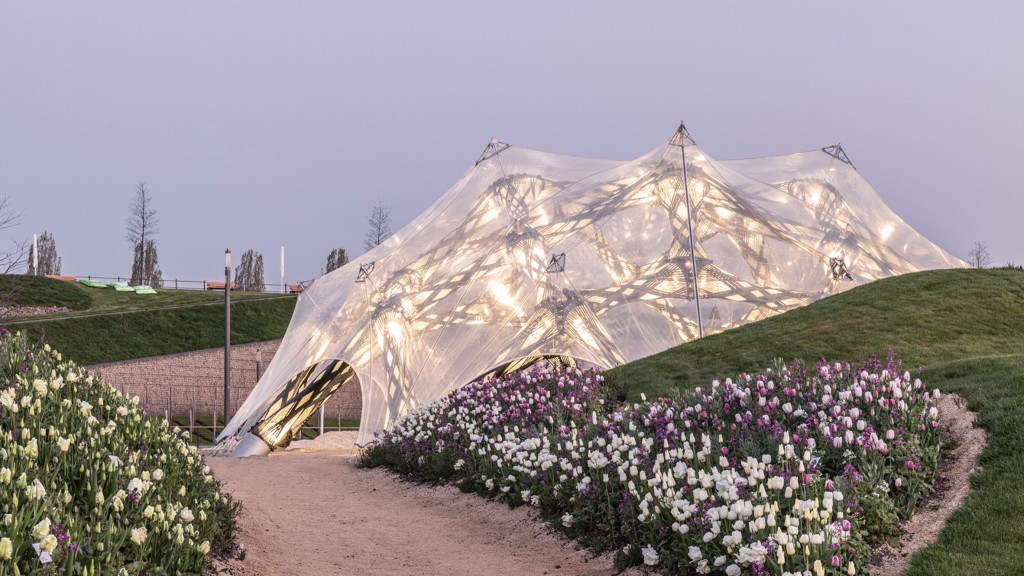
Both pavilions are on display until 6 October 2019|兩個展館都將展出至2019年10月6日
“This highly innovative construction method is far ahead of existing building regulations,” said Knippers. “The weight of the pavilion’s structure is many times lower than that of comparable steel or wooden structures,” he continued. “This makes the assembly much easier, as there is no need for heavy means of transport, scaffolding or lifting equipment.”
The BUGA Fibre Pavilion is on display on the Summer Island of the Bundesgartenschau, along with the BUGA Wood Pavilion, until 6 October 2019.
“這種高度創新的施工方法遠遠領先於現有的建築法規,”Knippers說。 “展館的結構重量比同類鋼結構或木結構的重量低許多倍,”他繼續道。 “這使得裝配更加容易,因為不需要繁重的運輸工具,腳手架或起重設備。”
BUGA纖維館將在Bundesgartenschau夏季島上與BUGA Wood Pavilion一同展出,直至2019年10月6日。

